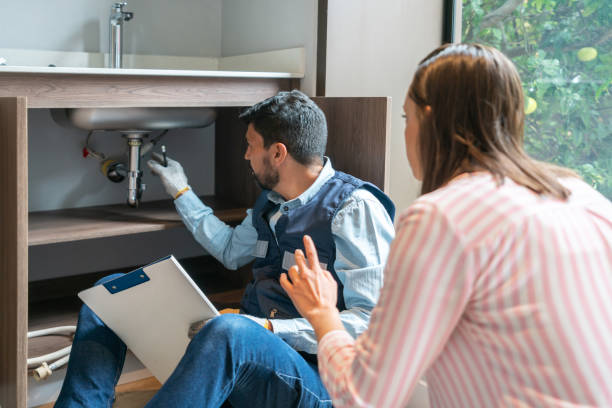What is Radon?
Radon is a naturally occurring radioactive gas that is colorless, odorless, and invisible. Because it is radioactive, it can cause cancer. In fact, radon is the number one cause of lung cancer in the U.S.
Radon is everywhere around us as it naturally occurs outdoors in harmless amounts. It is released from the soil as radioactive elements such as uranium (found in various amounts in soil and rock) are released from the decay of these elements into the air and into underground water and surface water. It can accumulate in places where there is inadequate ventilation, such as underground mines.
Radon Poisoning
Radon poisoning occurs when too much radon enters the body, resulting in harmful physiological changes – principally to the lungs. Unfortunately, you won’t feel it until long after the damage has been done. Radon exposure causes no immediate symptoms; later on, however, the cellular changes that have occurred as a result of high level, long term exposure can result in lung cancer.
Like people, pets will not show symptoms of radon poisoning until cancer is present. Some of those symptoms might include loss of appetite, abnormal swellings, coughing, excessive vomiting, lameness, and breathing difficulties.
According to the CDC, every home should be tested for radon. Test kits are readily available, affordable, and could save your life.
U.S. Radon Levels
The average outdoor air level of radon is 0.4 pCi/L. Levels tend to be higher in winter when windows and doors remain closed and there is less ventilation. According to the U.S. Environmental Protection Agency (EPA), the maximum “acceptable” level of radon is 4.0 pCi/L. While levels of 4 pCi?L or higher are considered hazardous, even that level is not necessarily safe. The EPA strongly recommends radon mitigation be considered when levels are between levels 2.0 and 4.0.
There are some states that have higher radon levels in the air than others. The ten states with the highest levels (click on the links for more information) are:
According to World Population Review, there are actually 31 states that have radon exposure above 4 pCi/L. In general, these states are in the northern half of the United States. Only five states and the District of Columbia are considered to have low radon levels. Those states are:
- Arizona
- Florida
- District of Columbia
- Mississippi
- Louisiana
- Hawaii
Radon can also accumulate inside buildings through the ground, cracks in your foundation, or construction gaps. Radon can also get into homes through well water, or rarely, certain building materials. According to the EPA (2016), nearly 1 out of every 15 homes in the U.S. has elevated radon levels. Even though you can’t smell, taste, see, or feel it, it can be deadly, so protecting yourself from exposure to too much radon is vital.
What are the Symptoms of Radon Poisoning?
Radon is all around us and we breathe it every day, at least at a low level. Unfortunately, there is no way to tell if you are breathing it in at a high level. Unlike carbon monoxide or some other gases, you cannot feel its effects until it has damaged your lungs, which is what leads to cancer.
According to the American Cancer Society, smoking is still the number one cause of lung cancer, but radon comes in second, with approximately 10% of radon-related cancer deaths occurring in those who do not smoke.
Early signs and symptoms of lung cancer may include:
- Persistent cough
- Coughing up blood
- Wheezing
- Shortness of breath
- Hoarseness
- Chest pain, especially when you cough or laugh
- Frequent infections such as bronchitis and pneumonia
Signs that Radon is Present
While there aren’t any specific medical tests that can assess your exposure to radon gas, you can have your home or business easily tested for the presence of radon. High levels are something you can remedy to make your home safer.
See your doctor if you have any of the symptoms of lung cancer; do not ignore a persistent or bloody cough or have chest pain. Lung cancer is easier to treat in the earliest stages, before it has a chance to spread.
Keeping Yourself and Loved Ones Safe
Have your home or workplace tested. You can contact your state radon office for a list of qualified testers.
Check EPA Radon Zones within your area.
Keep track of EPA information and resources about radon.
The CDC provides links to affordable home test kits that you can order yourself.
Resources
American Cancer Society. (2019). How to test your home for radon. https://www.cancer.org/latest-news/radon-gas-and-lung-cancer.html
CDC. (2019). Cancer data and statistics. https://www.cdc.gov/cancer/dcpc/data/index.htm
EPA. (2016). A citizen’s guide to radon: Guide to protecting yourself and your family from radon. https://www.epa.gov/sites/production/files/2016-12/documents/2016_a_citizens_guide_to_radon.pdf
EPA. (2017). Find information about local radon zones and state contact information. https://www.epa.gov/radon/find-information-about-local-radon-zones-and-state-contact-information#radonmap
EPA. (2018). Health risk of radon. https://www.epa.gov/radon/health-risk-radon
World Population Review. (2020). Radon levels by state 2020. http://worldpopulationreview.com/states/radon-levels-by-state/




No Comment